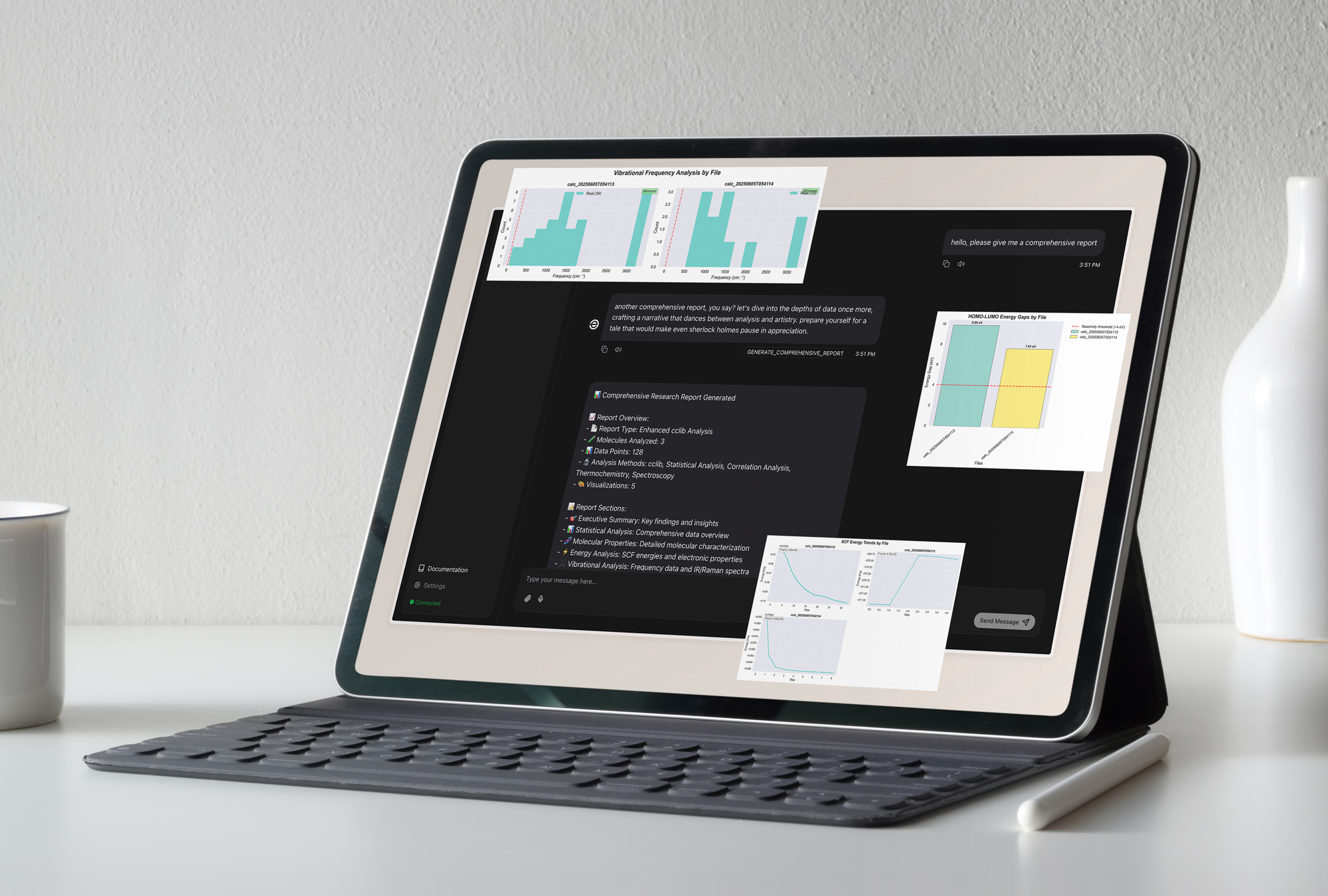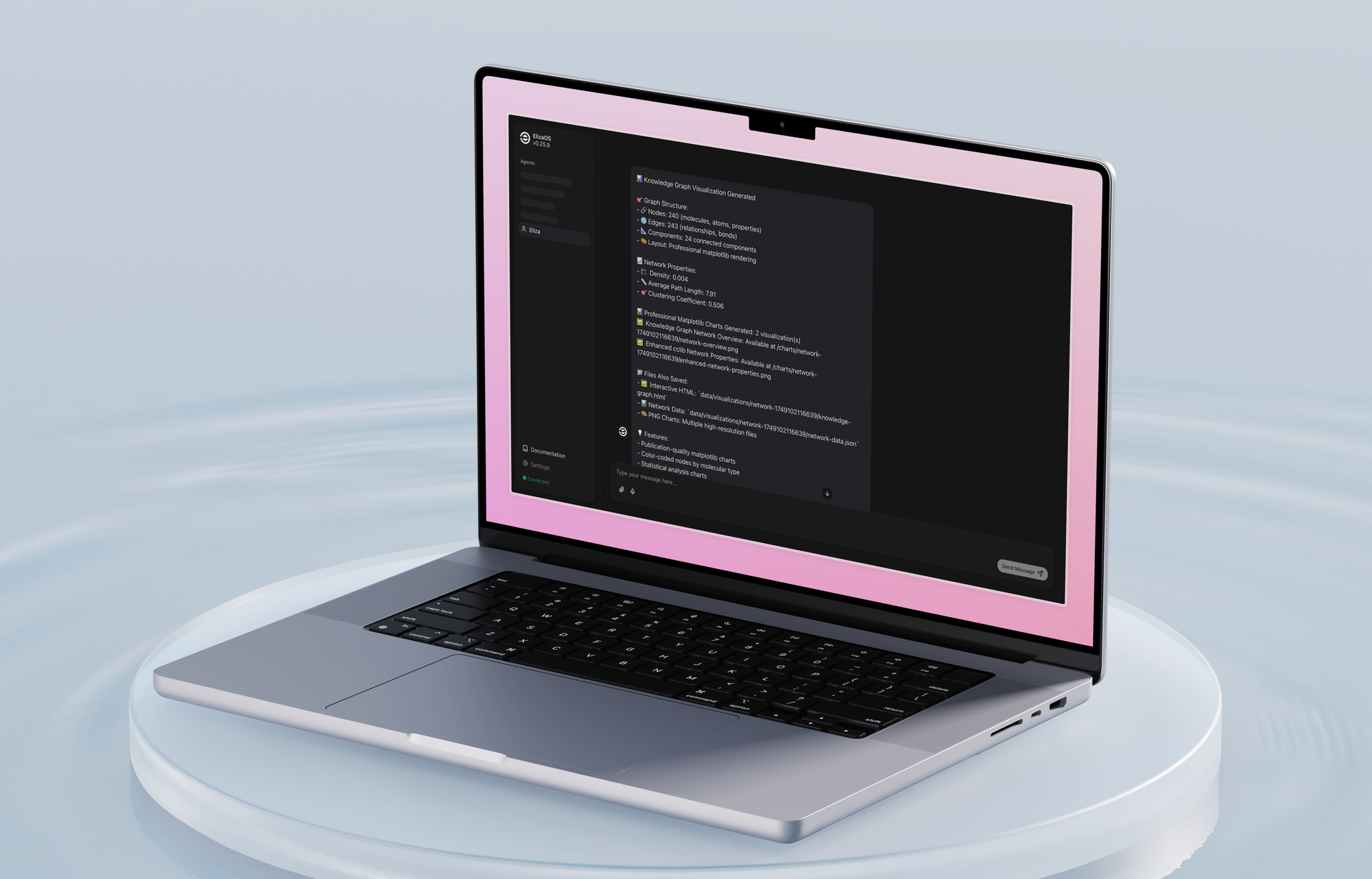
QuantumParse
AI-powered quantum chemistry workflow automation. $10,000 Solana prize winner at Bio x AI Hackathon.
Project Snapshot
Quantum chemistry shouldn't feel like it's stuck in 1999—and now it doesn't.
QuantumParse transforms quantum chemistry workflows by watching your working directory in real-time, converting log files into searchable RDF knowledge graphs, and serving visualizations through ElizaOS. Winner of the $10,000 Solana prize at the Bio x AI Hackathon.
Focus area
Automated quantum chemistry workflows
Real-time file monitoring and intelligent parsing that lets researchers focus on chemistry instead of data management.
Impact
Modernizing scientific research
Bridging 30-year-old computational chemistry tools with modern AI-powered automation and visualization.

Hackathon Success
Bio x AI Hackathon Winner - $10,000 Prize
QuantumParse won the $10,000 Solana prize for building the future of agentic science, with recognition from Bio Protocol, Solana Foundation, Prime Intellect, OriginTrail, and ElizaOS.
🥇 $10,000 Solana Prize Winner - Bio x AI Hackathon
- Recognized for bridging quantum chemistry with AI agent frameworks
Selected for innovation in scientific research automation and RDF knowledge graphs
The Problem QuantumParse Solves
Computational chemistry projects still rely on raw log files that are huge, messy, and hard to reuse. The manual workflows create bottlenecks that slow down research and introduce errors.
Copy-Paste Hell
Researchers often copy-paste energies into spreadsheets, pass logs around by email, and rebuild fragile parsing scripts for each new study. One typo or missing line can derail days of work.
No Search Capability
Searching for "all jobs that failed to converge last month" or "molecules with imaginary frequencies" is practically impossible without building custom tools. Raw log files don't support queries.
Legacy Data Mining
Academic and industrial chemists want to mine years of legacy logs for machine learning and meta-analysis, but without structured data extraction, that treasure trove remains locked away.
HPC Job Monitoring
HPC admins need early warnings when jobs keep crashing or converging slowly, but traditional tools require manual inspection of hundreds of log files to identify patterns.
Manual Transcription
Researchers spend hours manually transcribing numbers from text outputs into structured formats. Chemists shouldn't be lost in data—they should be doing chemistry.
Core Capabilities
QuantumParse automatically reads Gaussian 16 log files as they're generated, extracting key data including energies, basis sets, convergence steps, and warning messages—no configuration required.
Drops a readable summary straight into the ElizaOS chat window seconds after a job finishes. No more hand-transcribing numbers from dense text outputs.
Converts everything into clean RDF knowledge graphs that can be queried, analyzed, and integrated with other research data. The translation unlocks statistically solid meta-analysis and reproducible workflows.
Ask follow-up questions in plain English: "Show molecules with imaginary frequencies" or "List number of molecules processed". Answers come back instantly from the knowledge graph.
Graph and plot the most useful molecular properties directly within ElizaOS. Analyze the iterations of each Gaussian job visually to understand convergence behavior at a glance.
Track energy profiles, identify convergence issues, and spot patterns across hundreds of calculations without opening a single log file manually.
Built on ElizaOS to enable conversational interactions with your quantum chemistry data. Ask questions like "Which calculations failed?" or "Show me low-energy conformers" in natural language.
The AI agent understands quantum chemistry terminology and context, making complex queries as simple as chatting with a colleague.
Who Benefits
📚 Academic Researchers
Mine years of legacy logs without reinventing parsers. Build machine-learning models on quantum chemistry data with properly structured inputs.
🏭 Industrial Chemists
Accelerate computational drug discovery and materials design by eliminating manual data extraction bottlenecks. Focus on science, not data wrangling.
💻 HPC Administrators
Get early warnings when jobs keep crashing or showing convergence issues. Monitor job health across entire clusters automatically.
📊 Data Science Teams
Build ML models on quantum chemistry data with clean, structured RDF inputs. No more custom parsing scripts for every new dataset.
🎓 Instructors & Students
Interact with real quantum chemistry calculations instead of static screenshots. Make computational chemistry more accessible and engaging.
🔬 BioDAOs & Research Organizations
Manage hundreds of simulation jobs and trace which calculation supports each grant milestone. Transparent, queryable research provenance.

QuantumParse in action: Real-time parsing and conversational queries through ElizaOS
Technical Innovation
Python handles the heavy lifting of parsing Gaussian 16 logs, extracting energies, basis sets, geometries, and convergence data with robust error handling.
TypeScript powers the ElizaOS plugin interface, providing type-safe agent interactions and real-time chat updates as calculations complete.
Converts raw log files into RDF (Resource Description Framework) graphs that are queryable, interoperable, and ready for integration with other research databases.
Enables SPARQL queries, statistical meta-analysis, and reproducible workflows that would be impossible with plain text logs.
Built on ElizaOS pre-1.0.0 after navigating unclear documentation, multiple branches, and frequent breaking changes. A lesson in the importance of clear documentation for developer tools.
Despite the challenges, ElizaOS enables powerful conversational AI capabilities that make quantum chemistry data accessible through natural language.
Efficient file system watchers trigger parsing pipelines the moment Gaussian jobs complete, ensuring results appear in the chat window within seconds.
Handles large-scale HPC workflows with hundreds of concurrent calculations without missing a single result.
From Research Frustration to Innovation
Born from Real Research Experience
QuantumParse emerged from master's research on PFAS degradation, where the gap between cutting-edge quantum chemistry theory and outdated tooling became painfully apparent. With so much innovation in AI today, it was frustrating relying on 30-year-old Fortran-based software that forced researchers to spend more time managing data than conducting actual science.

Interactive visualizations transform dense log files into actionable insights
The Bio x AI Hackathon provided the perfect opportunity to bridge this gap—combining modern AI agent frameworks with quantum chemistry workflows to create the tooling that researchers deserve in 2025.
This project demonstrates how AI and automation can modernize scientific research workflows, freeing researchers to focus on discovery rather than data management. The same principles apply to any industry dealing with complex, structured data—from financial analysis to medical research to business intelligence.
Real-World Impact
Modernizing Scientific Research
QuantumParse represents a new paradigm for scientific software—one where AI agents handle the tedious work of data management and researchers can focus entirely on scientific questions and discovery.
Whether you're running quantum chemistry calculations, analyzing large datasets, or managing complex workflows, the principles behind QuantumParse apply: automate the tedious, visualize the complex, and let humans focus on what they do best—thinking creatively and solving problems.
Interested in bringing AI-powered automation to your research or business workflows? Let's explore how intelligent agents and modern tooling can unlock productivity in your field.